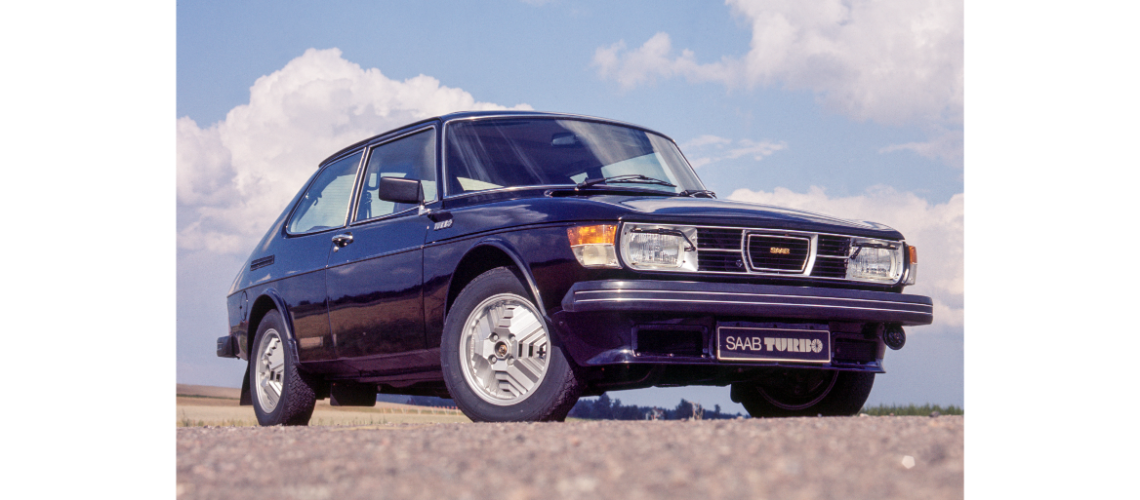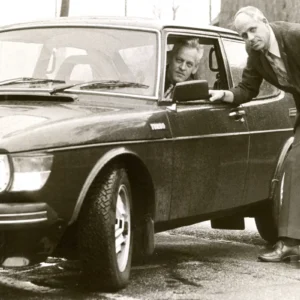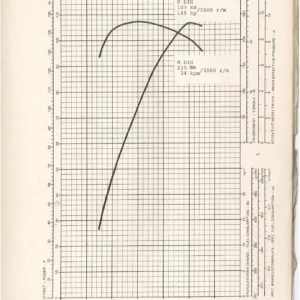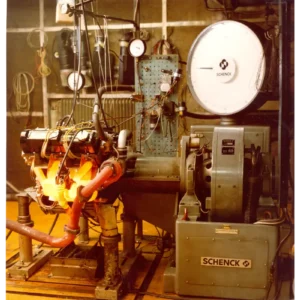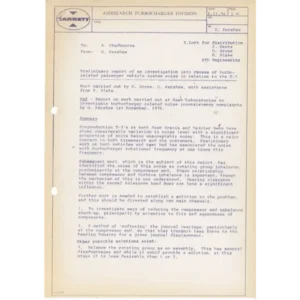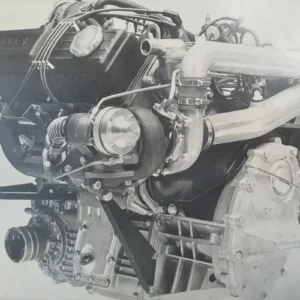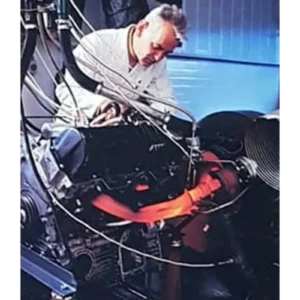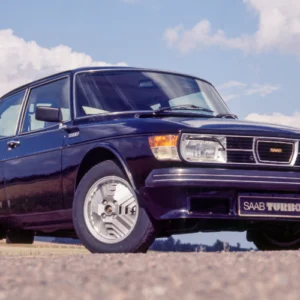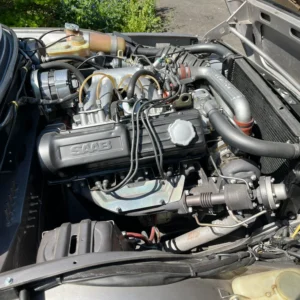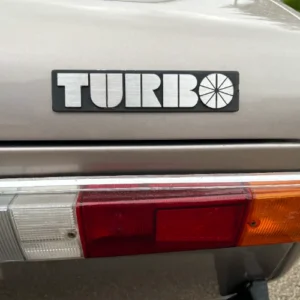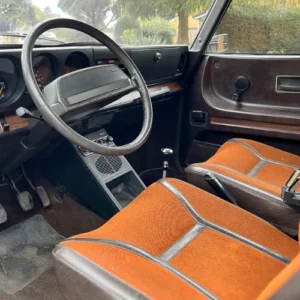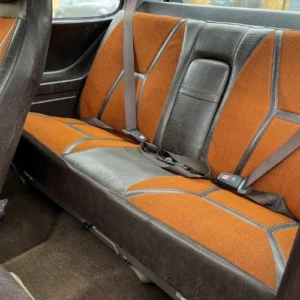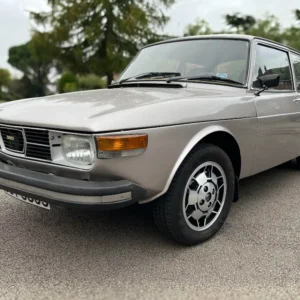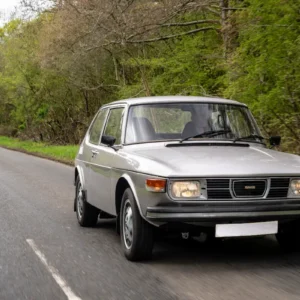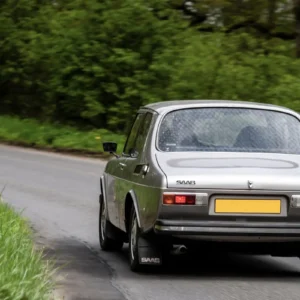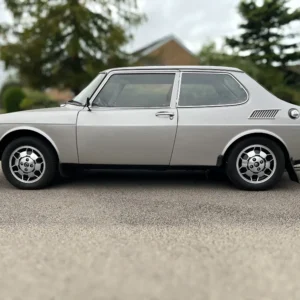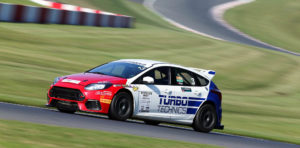In 1974, while working for Garrett AiResearch, Geoff Kershaw became part of the team that developed the SAAB 99 Turbo and opened the world to passenger car turbocharging. This is his story.
In 1974, I had been working for several years with Rolls Royce, starting as a graduate apprentice in the aero division and progressing through design and research departments within the diesel engine division. My major project, a 12 Litre truck engine, had achieved the first smoke emission certification in the UK, and won a Design Council award.
I was thinking about the next stage of my career development when an invitation came to join Garrett AiResearch at their fledgling turbocharger division in the UK. I had been working with turbocharged versions of the RR truck engine for some time, so this was rather familiar territory. Moving from a very ‘backroom’ job at RR, the Garrett opportunity was to be the technical and sales representative to Swedish customers SAAB-Scania and Volvo, which at that time were at the leading edge of truck engineering. This was an exciting opportunity, though at the time I didn’t know just how exciting it would become!
Initially, the activity was centred on winning business with truck engine applications which was a tough market, and with a combination of industry-leading products, pricing and manufacturing support, Sweden became a very important area for the company.
A few months into this activity, Garrett began thinking about the possibility of applying their turbocharging expertise in the passenger car field. Turbocharging had been used for a few specialised cars up to that point, but using what were essentially truck turbo designs. Initially, a series of high-level meetings were arranged with potential customer companies across Europe to float the idea and gauge interest. The Garrett pitch was that a small turbo engine could replace a larger naturally aspirated engine to give lower emissions and improved fuel economy, and this immediately sparked interest within SAAB as an early programme was already in existence using a small Holset truck turbo. This had been initiated by visionary engineer Per Gillbrand (Pelle), who was head of engine development in Södertälje, as an alternative to building a larger engine which would have required major investment.
The industry feedback confirmed the Garrett view that there was a future for turbocharging in petrol-engined cars, given the availability of suitable machinery, and this would also make small diesel engines viable.
The decision was taken in late 1974 to develop a small turbo specifically for passenger cars around 2.0 litres, and crucially, matched for use with a wastegate. To shorten the development lead time, this was to be based on the existing larger T04B bearing housing and bearings, but with smaller wheels. The turbine wheel was based on a design used in the space programme for power generation in space (the BRU wheel) scaled down, and the impeller was a design from Garrett’s Chief Aerodynamicist, Andrew McCutcheon. This became the T3 – surely the best known turbo model in the history of turbocharging.
SAAB was considered to be the leading OEM programme for petrol engines, along with Daimler Benz with their 3.0 Litre diesel, and development efforts were concentrated on these applications. It took the best part of a year to produce the first turbo. I clearly remember taking it to SAAB in November 1975, where it was fitted and ran about 6.00 one evening. When everyone came into work the next morning, the whole place buzzed with excitement because the performance of the T3 was so much better than anything they’d seen. A meeting the same day set the course for development and eventual production.
SAAB were very concerned to achieve high torque in the mid speed range and had developed their own poppet-valve wastegate which used boost pressure as a control, in combination with exhaust manifold pressure, to give maximum boost pressure in the mid-range. Garret’s own swing valve wastegate was not developed until later, so SAAB continued with their own design. Two different turbine end configurations were tested before arriving at the final configuration.
It was during this time that I started working with the engine development engineer Anders Johansson, and we immediately struck up a friendship beyond a working relationship. Anders was very ‘hands on’ with a ‘can do’ approach to any problem – great to work with. His manager was the legendary Per Gillbrand – also great to work with.
The next stage was to obtain more turbos for testing and development, and an order was placed for 20 prototype units with a March 1976 deadline for the first 5. This was confirmed at a meeting on 11 February 1976, and the programme was set.
The initial batch of turbos was destined for engine development and test bed durability running. The T3 turbo was a brand new design, with little precedent for the exhaust temperatures that are typical in a petrol engine application, and the engine was also being taken beyond its original rating, so it was essential to evaluate the durability of both. SAAB had developed a test cycle comprising a mix of high load and idle running, and this was run 24/7 in an automated test cell. Subsequent examination of the turbo components showed no significant wear of the bearings or degradation of other components apart from the cast shroud (the heat shield behind the turbine wheel), which was subsequently changed for a stainless steel pressed version.
SAAB were running two test cars at Södertälje, and when a batch of production spec. turbos was delivered in September, the first ones were fitted to them. There was an immediate report of a sound like a ‘wolf howl’ as the turbos accelerated. The cause of this was not immediately apparent, and with various possibilities to be investigated I set off for Södertälje, telling my family I would be gone for ‘a few days’.
As I arrived in September 1976, SAAB was involved with industrial action which meant that development work was halted. To avoid delaying the test programme, the turbos and a test car were taken to Anders’ own garage and we spent several days test-fitting each turbo in turn. The initial thought was that the cause might be aerodynamic, with the prime candidate being a flow disturbance in the exhaust gas entering the turbine wheel. This was investigated, and while it was possible to replicate a low level of noise it took a major disturbance at the turbine entry to do this. Changing turbos on the test car, it quickly became apparent that some were quiet and some noisy with varying levels of noise. This didn’t completely rule out an aerodynamic cause, but did lead to the likelihood that balance could be the cause.
After a few days, the industrial dispute was settled and some serious investigation could commence. One of the noisy turbos was modified to fit a speed sensor1, and an accelerometer attached to the bearing housing. It was immediately obvious that the noise level and frequency followed the vibration level and turbo speed, leading to the conclusion that balance of the rotating components was the root cause.
At this stage, the test facilities at Garrett’s headquarters in Los Angeles were required for further investigation, so it was decided that I would take 3 of the turbos (quiet, noisy and very noisy examples) directly to LA and continue the work there. A turbo test bed known as a gas stand was used for testing, where the turbo could be powered by hot gas from a combustion chamber and run up to maximum speed. It was quickly confirmed that vibration due to imbalance was the cause of the noise, with flexible parts of the engine acting as a sounding board.
Various measures were investigated to ‘soften’ the bearings and control the vibration, but with very limited effect. Improving the accuracy of the component parts would be commercially unrealistic and it was rapidly concluded that the only effective course of action would be to test and correct the rotating group after assembly. This would require specialist equipment which did not exist at the time and ultimately lead to the development of the VSR.
This initial investigation lasted four weeks, at which point I had to hand over the project to the American engineering group and return to the UK but via Mexico (spending a weekend with friends) and Italy (visiting various customers). I eventually returned home after seven weeks away – such was life in the automotive industry in those days!
An interesting side investigation on the test bed was to try to understand the role of shaft motion. The shaft of a turbo does not simply rotate within the bearings, but is subject to various flexing and oscillation modes which can lead to unstable motion. This was checked by mounting a pair of sensors at 90 degrees around a specially prepared nose nut. The relative position was recorded at high frequency and could then be played back at lower frequency to display the movement of the shaft end. As the shaft was rotating at speeds up to 120,000 revs/min and multiple measurements were needed for each revolution, this was stretching the capabilities of available data-logging equipment in 1976!
Meanwhile, engine and turbo durability testing was continuing in Södertälje both in-vehicle and on test beds. For the next stage of proving the vehicle and the concept, it was planned to place 100 cars with selected operators for real-world testing. The intention was to gain experience with a wide variety of customers, in different countries and climates. Vehicle build was scheduled for early 1977, which meant that 150 turbos were needed in December 1976, which was going to be a difficult target to meet. Most of the rotating parts were to be manufactured in the US, while remaining parts were mostly from UK supply.
There was no equipment available for high speed core balancing at this stage, and the only option was to balance each rotating group at low speed outside the bearing housing. The components were then marked for orientation, and re-assembled inside the bearing housing, maintaining the orientation as closely as possible. It was recognised that this process was less than perfect, but gave the best control available at the time. With parts shipments flying across the Atlantic, the turbos were shipped just in time to meet SAAB’s production deadline.
Durability testing continued through 1977, confirming the basic design of the T3.
In September 1977, the 99 turbo was first shown to the public in Frankfurt, and also at the Svenska Mässan in Sweden. This was a pre-release ahead of the planned production launch.
Engine production commenced in Södertälje in November 1977. Turbos were produced in Garrett’s UK plant in Skelmersdale but at the time the only VSR was the prototype in Los Angeles. Initially, this meant that turbo cores, the rotating part of the turbo, were assembled in the UK, flown to Los Angeles for balancing, flown back to the UK for final assembly and then shipped to Sweden!
This process could not keep pace with requirements, so some turbos had to be shipped direct without balancing. SAAB had built a simple test rig based on a bare engine using a compressed air drive with a hand-held accelerometer for vibration measurement and this could be used with a simple fixture to rotate the impeller in situ until the turbo was balanced. This was set up at the side of the Södertälje engine production line, and Garrett service engineer Roy Evans and I spent two weeks in December balancing turbos to keep the line running.
I attended the UK launch in April 1978 which took place over two days, one for the technical press the other for the general press. The technical journalists were of course interested in an important new concept, while the Fleet Street journalists seemed more interested In SAAB UK’s restructuring and finances!
Early in 1978 as the engine development was winding down, SAAB decided to sell off one of their test cars and I was given the opportunity to buy #2, GSY 839 (#1 had been written off early in the programme). At the time importing a car to the UK was a somewhat involved process requiring an import agent to complete paperwork at the port. For contractual reasons the sale was routed through Orvangs Bil, one of SAAB’s Swedish dealers, and I collected the car at the end of March paying 14,500 SKr (about £1,500). The headlights had to be changed for UK use and it then needed an MOT certificate in order to complete the UK registration which caused some interest at the local SAAB dealer as they had only just received their first sales vehicles a few days before!
A few weeks later while travelling between Göteborg and Södertälje, the engine suffered a piston failure perhaps as a consequence of poor fuel quality. The car was recovered to Södertälje and SAAB donated one of the spare engines from the original test series which was fitted by the test shop mechanics in their own time.
I continued to run the car as regular transport for almost 3 years, until a stuck wastegate valve caused overboost and a gear failure. By this time I was in the throes of starting Turbo Technics and had no time for repair so the car was mothballed and remained so for 42 years! In 2022, with restoration near complete, it was decided to take the car to the SAAB 75th anniversary in Trolhattan.
Post note
I put these notes together in 2022 – 44 years after the SAAB production launch. My memory of events was thoroughly tested, particularly dates, but I think the story is important enough to set down for posterity. I was fortunate enough to be involved in a very exciting period of automotive history; not only involved, but very much at the centre with close involvement with both the turbo and engine development. With tens of millions of turbo cars on the roads today, this truly was the beginning of a very important era. It was hard work with long hours, a lot of travelling, but great camaraderie and a lot of fun along the way. We didn’t count the hours – we just lived it.

